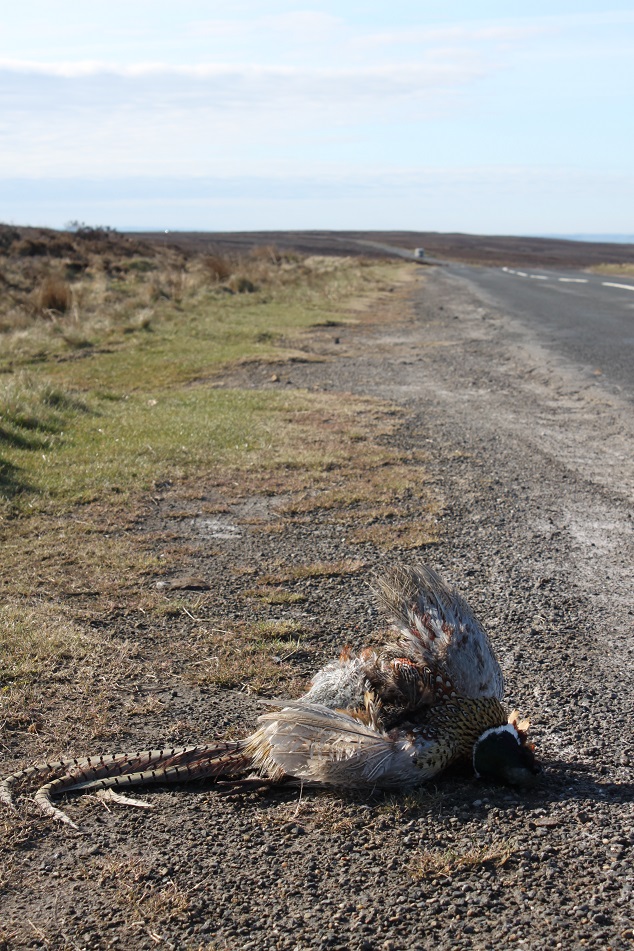
Here’s a dead Pheasant. Something will come along and eat it (although since it is surrounded (for a distance of far more than 500m in all directions) by grouse moor the density of scavenging birds and mammals might be quite low. A good bet for the destination of quite a lot of roadkill gamebirds is the Carrion Crow – the clue is in the name.
The UK has lots of Carrion Crows (and Red Foxes and other scavengers) compared with all other European countries and we also have the highest numbers of released gamebirds anywhere in Europe (and the numbers just keep going up). That these two things, lots of gamebird carrion and high scavenger densities, might be causally linked has been suggested, and here is an example in a 2018 refereed and published paper.
The two facts seem quite well established, but the causal link between them looks possible but is way short of proven, just as it is way short of being ‘simply no evidence‘.
An even more recent study published last year, does add another piece of evidence to the story. Pringle et al. showed that within the UK a similar type of correlation existed as the one discerned by looking across European countries; more gamebirds = more scavengers. This was criticised, though it was fairly fair comment, for being a weak correlation by GWCT when the paper was published but it is worth noting that since DEFRA now says that the captive gamebird dataset is a bit rubbish (and this paper relied on that dataset) then better data might improve or worsen the correlation.
The GWCT themselves say ‘There are other possible effects of releasing for shooting, good and bad, that currently we can only speculate about. One of these relates to the potential for an increase in predator populations alongside large pheasant releases and the possibility that these enhanced predator populations affect other wildlife, in particular ground nesting birds.’
So this impact of gamebird releases is not proven but it’s also not a foolish idea – far from it. That seems to be accepted by RSPB, BTO and GWCT for a start (and by Wild Justice for what that is worth).
And note, that the impact of this issue would not fall off after 500m from a release site. And note also, DEFRA (and indeed Natural England) almost behave as though it doesn’t exist whereas it falls squarely in the ‘not proven but not ruled out and seems quite sensible really’ category. This issue will crop up in later blogs.
[registration_form]
I have lived in my current rural location for 3 + years and regularly count at least 12 pheasants in my garden, both male & female.The garden is definitely much more than 500 metres from any release pens, probably about 3 km at least, and these birds have roamed here for at least 3 years and are breeding, as there are young birds each year. They damage plants, leave droppings and hoover up any seed dropped from bird feeders. They intimidate the local birds who leave the garden when they are around. I have also had tick bites which they may have brought into the bushes therefore Lyme disease is a worry. Fed up of them.
And under the ‘arcane’ legislation, the burden falls on those wanting to authorise an activity to show that there will be no significant adverse consequences. That will take some doing even for releases well beyond 500m of protected sites.